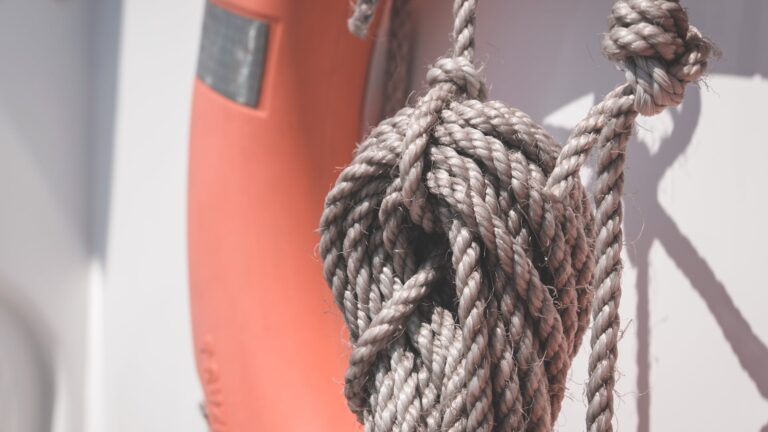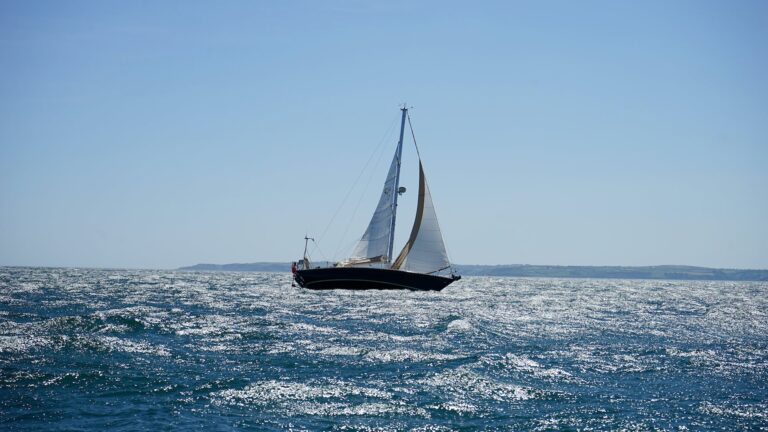Why do sailors need to know knots?
- Introduction:
- Definition of Knots
- Why Knowing Knots is Important for Sailors
- History of Knots
- Types of Knots Used in Sailing
- How to Tie Commonly Used Knots
- Benefits of Knowing Knots for Sailors
- Tips for Learning and Remembering Knots
- Examples of Using Different Types of Knots
- Safety Considerations when Tying Knots
- Conclusion
- Resources for Further Reading & Learning About Knots
- FAQs About Knots and Sailing
Why Do Sailors Need to Know Knots?
Sailing is a unique and exciting way to explore the world, but it’s also a skill that requires knowledge and practice in order to stay safe and enjoy your time on the water. Knowing how to tie knots is an essential part of sailing, and this article will explain why sailors need to know knots and how they can learn them effectively.
History of Knots
Knot tying has been around since ancient times, with some historians claiming that it dates back as far as 30,000 years ago when our ancestors first started using rope-like materials to bind things together or build shelters. In sailing, knots are essential for attaching lines and sails securely, as well as for rigging safety systems such as life lines or jack lines which keep people on board safe if they need to move around the boat in rough seas or strong winds.
Types of Knots Used in Sailing
The types of knots used in sailing vary depending on the purpose they’re used for, but some of the most commonly used ones include bowlines, figure eight knots, clove hitches, half hitches, reef knots and sheet bends. Each knot has its own purpose but it’s important to know a variety so you can choose the right one depending on the situation you’re facing at sea.
How to Tie Commonly Used Knots
Tying knots is a skill that needs to be practiced regularly in order to become second nature, so it’s important to make sure you take the time out to practice them whenever possible – even if it’s just tying a few simple knots like a bowline or clove hitch while watching TV! There are lots of great tutorials online for learning how to tie commonly used sailing knots – from step-by-step diagrams to video tutorials – so make use of these resources if you want help learning how to tie them correctly and safely.
## Benefits of Knowing Knots For Sailors
Knowing how to tie various types of knots is an incredibly useful skill for any sailor – not only will it help you stay safe by ensuring your lines are tied securely but it can also save you time when rigging a boat or making repairs at sea. It also gives you peace of mind when dealing with tricky situations such as mooring your boat in strong winds or rescuing someone who’s fallen overboard!
## Tips For Learning And Remembering Knots
There are several ways you can learn and remember various types of knots: one way is by using mnemonics – these are short phrases made up from the first letters of different parts of a knot which help you remember how it should be tied correctly; another way is by breaking down each knot into its individual steps before attempting it – this helps you understand what each step does; finally, practice makes perfect! So once you’ve learnt how each knot should be tied correctly, practice tying them until they become second nature – this will make them much easier to remember when out on the water!
## Examples Of Using Different Types Of Knots
Knowing which type of knot should be used in each situation is key when it comes to sailing safely: here are a few examples: – A figure 8 knot should always be used when attaching sails or halyards as it won’t slip even under tension; – A clove hitch should be used when mooring your boat as it’s easy and quick to tie; – A bowline should be used when attaching safety lines such as lifelines or jacklines; – A half hitch should be used when lashing items together such as fenders or spinnaker poles; – A reef knot should be used for tying two ropes together securely; – Finally, a sheet bend should be used when joining two ropes which aren’t the same thickness – this ensures that they don’t slip apart under tension!
## Safety Considerations When Tying Knots
It’s important not only that sailors know how to tie different types of knots correctly but also that they use them safely: here are a few tips: – Always double check that your knot has been tied correctly before using it; – Make sure all lines are secure before moving onto another task; – Wear gloves where possible if handling rope which could cause rope burn; – Check all knots regularly throughout the day/night (especially during periods where there’s extra strain on the lines); – Make sure all ropes have stopper knots at their ends so they don’t get pulled through any rigging/mast etc.; – Finally, always keep safety top-of-mind: if something doesn’t feel right then stop what you’re doing and investigate further before continuing!
## Conclusion
Knowing how to tie different types of sailing knots is an essential skill for every sailor – not only can learning these skills help keep everyone onboard safe but knowing them can also save time when rigging boats or making repairs at sea. There are lots of resources available online which can help sailors learn different types of knots effectively– from step-by-step diagrams through to video tutorials– so make use these resources if you want help mastering these skills!
## Resources For Further Reading & Learning About Knots
Here are some great resources which will help sailors learn more about tying different types of sailing knots: The Ashley Book Of Knots (1944) – This book contains detailed instructions on over 3,900 different kinds of knots along with illustrations demonstrating how each one should look– perfect for anyone wanting an authoritative guide on knot tying! The Encyclopedia Of Sailing (1997)– This comprehensive book covers all aspects related to sailing from seamanship through navigation through sail care– including detailed instructions on how best to tie different types of commonly used sailing knots! AnimatedKnotsin3D (2020)– This website provides 3D animations demonstrating exactly how each type of knot should look– perfect for anyone needing some extra help understanding what each part does!
## FAQS About Knot And Sailing
Q: What type(types)of knot(knot)should I use?
A: This depends on what task you’re trying achieve– some common tasks include attaching sails/halyards (use a figure 8), mooring (use a clove hitch), securing safety lines (use a bowline), lashing items together (use a half hitch), tying two ropes together securely (use a reef knot) and joining two ropes which aren’t the same thickness (use a sheet bend).







